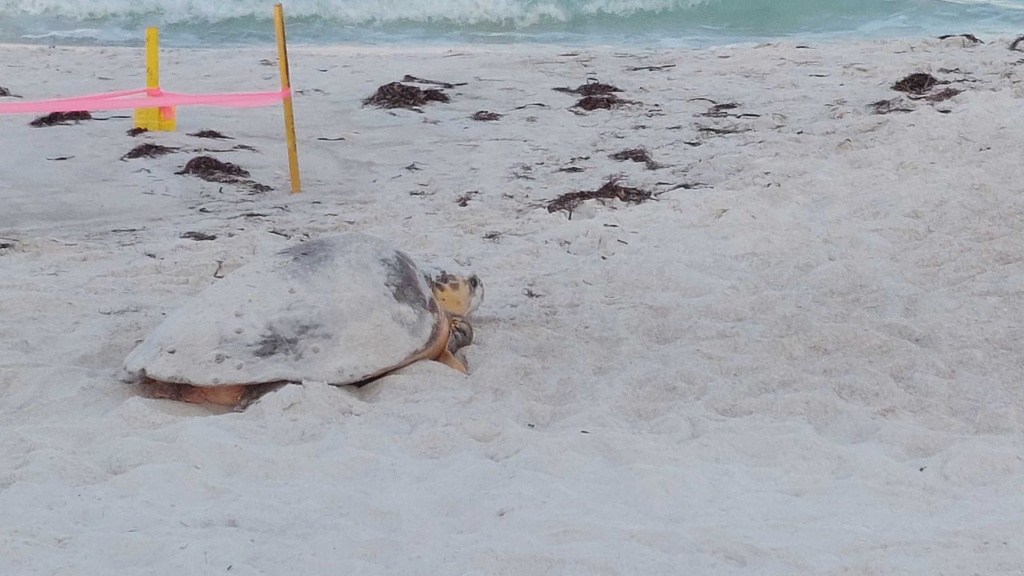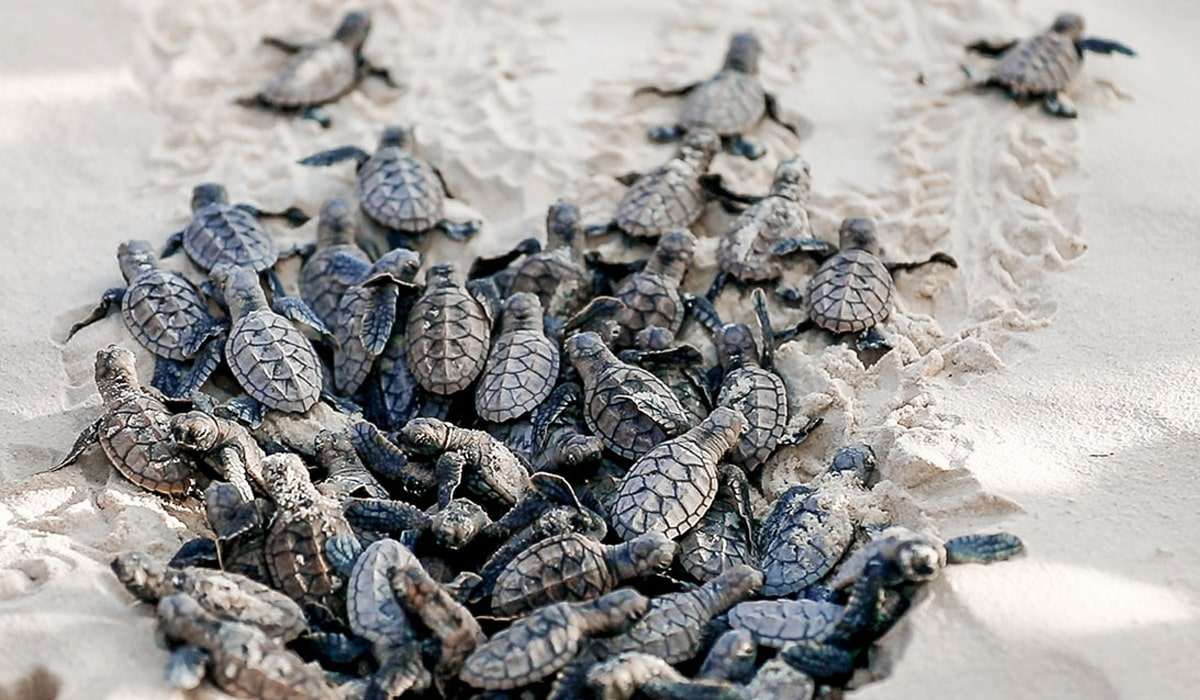This year’s turtle nesting season in Florida showed promising numbers with a record number of nests documented along sections of the Gulf Coast. However, hurricanes Debby, Helene, and Milton brought widespread damage, washing away many of these vulnerable nests.
The Florida Fish and Wildlife Conservation Commission and Clearwater Marine Aquarium are closely monitoring the impact of these storms on sea turtle populations, which are already at risk from various environmental and human-induced factors.
A Promising Nesting Season Cut Short by Storms
Along a 21-mile stretch of Florida’s Gulf Coast, the Clearwater Marine Aquarium reported 271 documented sea turtle nests, a notable increase from the 227 nests recorded in 2023. This increase was a hopeful sign for conservationists, as it indicated positive trends in turtle nesting activity, particularly for loggerhead turtles, which are the predominant species in this area.
Loggerhead turtles are classified as vulnerable, and their nesting success is crucial to maintaining the population’s stability. However, despite the initial rise in nesting activity, the destructive force of this year’s hurricanes wiped out a significant number of active nests along the beaches near Clearwater, where the aquarium monitors nesting activity.
Read : Hurricane Milton Passed Over Florida, Taking Away the Lives of 16
The impact of the hurricanes was so severe that many nests along Florida’s Gulf Coast were inundated by storm surges, and several sections of the beach were entirely washed away. The timing of the hurricanes coincided with the nesting season, which typically lasts from mid-April to the end of October.
Read : Rapper Travis Scott Arrested in Florida for Disorderly Intoxication and Trespassing
This overlap left the nests particularly vulnerable, as they were still developing and required the full nesting season to ensure successful hatchling emergence. Although hurricane season in the Atlantic runs from June through November, nesting sites cannot be relocated without risking the eggs, leaving them defenseless against the storms.
Significant Losses Among Loggerhead, Green, and Leatherback Nests
While loggerhead nests are the most common along Florida’s Gulf Coast, this season saw a broader range of species nesting in the area, including the rare leatherback turtle. The appearance of a documented leatherback nest was a historical event for Pinellas County, marking the first time leatherbacks had been confirmed in this region.
The aquarium team observed the leatherback hatchlings making their journey to the sea, underscoring the importance of each successful nesting season for turtle conservation efforts. Unfortunately, the recent hurricanes have not spared these special nests from the devastation.
In addition to loggerhead nests, the aquarium recorded two green turtle nests, another species that frequently nests along Florida’s beaches. Green turtles are classified as endangered, and their nesting success is critical for the preservation of the species.

This year, Florida saw record-breaking numbers of loggerhead and green turtle nests statewide in 2023, with over 133,840 loggerhead nests and 76,500 green turtle nests—totals that far exceeded previous years. These numbers illustrate the potential impact of even a single hurricane season on years of conservation progress.
Though many nests along Florida’s Gulf Coast were lost to the hurricanes, the number of nests documented earlier in the season remains a hopeful indicator for long-term recovery, provided that conservation efforts remain robust.
The Role of Conservation Efforts Amid Environmental Challenges
Organizations like the Clearwater Marine Aquarium and Florida Fish and Wildlife Conservation Commission play essential roles in tracking and protecting sea turtle nests along Florida’s coastline. Their teams patrol beaches, document nests, and conduct research to understand turtle behavior and the factors affecting their populations.
Turtle conservation efforts include measures such as monitoring nesting activity, installing protective barriers, and reducing artificial light pollution that can disorient hatchlings. Additionally, conservation teams educate the public on the importance of protecting sea turtle habitats, which face multiple threats from human activities.
However, natural events such as hurricanes pose a recurring and largely uncontrollable threat to these conservation gains. As climate change intensifies the frequency and severity of hurricanes, Florida’s coastal ecosystems are at increasing risk.

This underscores the need for resilient and adaptive conservation strategies that can account for environmental changes. As sea turtles depend on Florida’s beaches for nesting, their future depends on maintaining these habitats despite the challenges posed by natural disasters.
The collaboration between scientists, local authorities, and volunteers continues to be essential for safeguarding sea turtles during critical nesting periods. Innovative solutions, such as artificial incubation programs and relocation efforts, are being explored, although they present risks that require careful management.
Conservationists are also calling for more research into the impacts of hurricanes on sea turtle populations and are advocating for policies that strengthen protections for coastal wildlife.
This year’s turtle nesting season began with record numbers, sparking hope among conservationists. However, the arrival of three powerful hurricanes dealt a harsh blow, washing away many of the nests and posing a serious setback to ongoing conservation efforts.
Despite the challenges, organizations and volunteers continue their work to protect Florida’s vulnerable turtle populations, adapting their strategies in response to environmental threats. As these nesting grounds remain vital for sea turtles’ survival, conservation measures that address both human and natural impacts are more critical than ever.
let’s enjoy few years on earth with peace and happiness….✍🏼🙏

